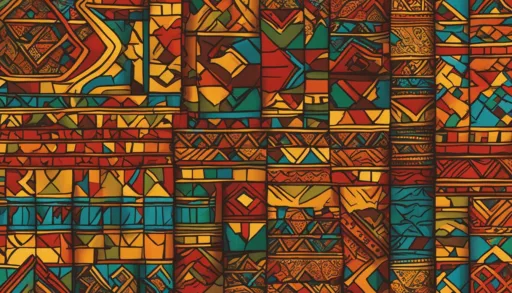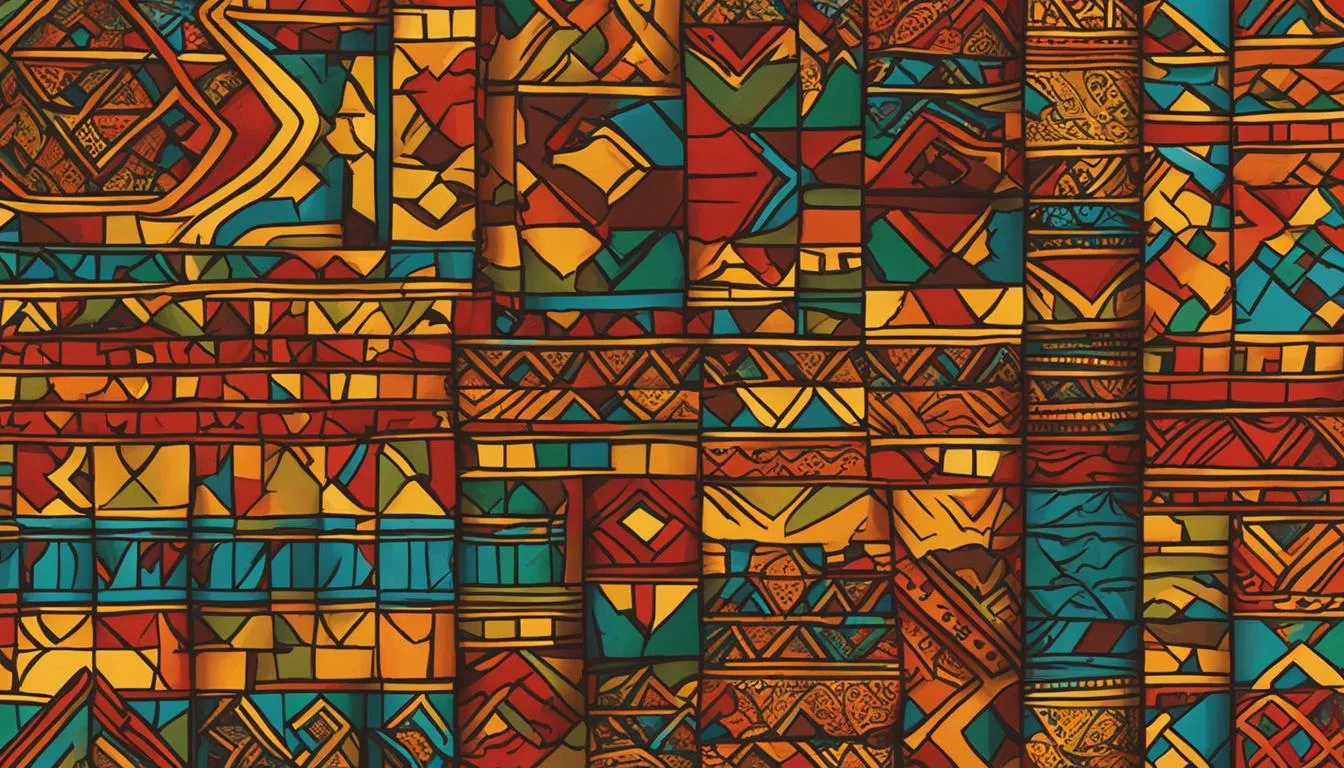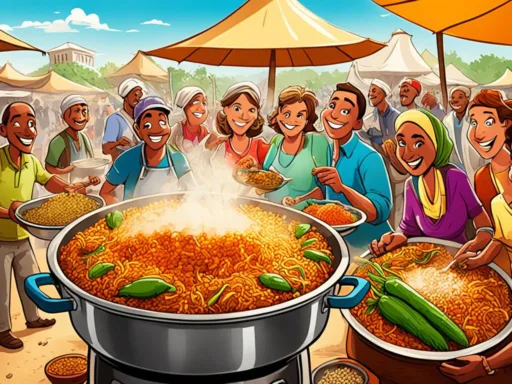Imagine living in a country where nearly 44 different languages mingle in markets, schools, and governmental offices. This is the reality in Togo, a small West African nation with a linguistic diversity that belies its size. From the bustling streets of Lomé to the serene landscapes of the north, linguistic diversity in Togo is not only evident but also celebrated. French, the official language, is spoken by an impressive 41% of the population, serving as a bridge in a multilingual society. Yet Togo’s dedication to its linguistic heritage is further shown through its promotion of Ewé and Kabiyé—languages that are woven into the nation’s educational and media frameworks.
With Togo’s recent accession to the Commonwealth in 2022, the government has underscored the development of English language skills, seeking to create new ties and access a wider array of cultural and educational resources. This strategic move underscores the evolving nature of languages spoken in Togo, a testament to the country’s dynamic cultural landscape.
Key Takeaways
- Togo’s linguistic landscape is home to 44 distinct languages, reflecting a vibrant and complex cultural heritage.
- The official language, French, is spoken by a significant portion of Togo’s population and is crucial in commerce and administration.
- Ewé and Kabiyé play important roles as national languages, deeply integrated into regional identity and communication.
- Togo’s accession to the Commonwealth indicates a growing interest in the English language and international connectivity.
- The linguistic diversity in Togo underscores the importance of language policies that embrace both foreign and indigenous tongues.
Togo: A Linguistic Tapestry
The West African nation of Togo is distinguished by its stunning linguistic diversity, a true reflection of the country’s rich cultural landscape. As we delve into this linguistic scene, it becomes evident that the interweaving of native languages Togo and foreign dialects has created a vibrant social fabric unique to this region.
Defining Togo’s Language Diversity
Togo’s language diversity is most vividly captured in the range and usage of its indigenous languages. The Gbe language group, to which the national language Ewé belongs, spreads its roots broadly throughout the southern half of the country. These native tongues are not only a means of communication but also a reservoir of culture and traditions for the Togolese people.
The Mix of Indigenous and Foreign Tongues
The rich tapestry of Togo official languages demonstrates a dynamic juxtaposition of local dialects against the backdrop of global languages. A confluence of vernacular languages such as Ifè and Talensi, among others, articulate the everyday life of Togo’s communities. Moreover, the influx of languages like Yoruba and Hausa from neighboring immigrant populations adds further to the linguistic diversity Togo boasts.
Foreign languages have also cast their influence on this diverse pallet, with Arabic, English, and German spoken due to historic ties and contemporary engagements. Togo’s embrace of these languages amplifies the country’s openness to cultural exchanges while promoting international relations.
Beyond speech, it is the embodiment of vitality, history, and identity that these languages represent, rendering Togo’s linguistic tapestry not just complex but also profoundly meaningful. Below is a snapshot highlighting the spread and significance of these languages:
| Language Family | Languages | Regions Spoken | Significance |
|---|---|---|---|
| Gbe | Ewé, Mina | South Togo | National language; rich in cultural expressions |
| Gur | Kabiyé, Tem | North Togo | Integral for regional communication and identity |
| Foreign Tongues | Arabic, English, German | Nationwide (minor) | Reflect historical ties and modern-day global integration |
| Immigrant Languages | Yoruba, Hausa | Various communities | Add diversity to linguistic practices; trade languages |
In understanding the intricate fabric of languages within Togo, we appreciate the intricacies that come with preserving a nation’s linguistic heritage while embracing the opportunities of a connected world.
The Role of French as Togo’s Official Language
French not only serves as the Togo official language but also plays a critical role in the nation’s cultural and administrative spheres. Its prevalence is deeply rooted in Togo’s history, forging avenues for communication and uniting diverse ethnic groups. In contemporary Togo, the French language in Togo is much more than a relic of colonialism; it is a prominent feature of Togolese identity that resonates through every layer of public life.

French in Public Life and Government
Within Togo’s bustling markets and government halls, French is omnipresent. As the medium of official communication, it facilitates interaction among Togo’s citizens and between the state and its people. The prevalence of languages spoken in Togo may vary, but French stands out as the unifying tongue in both the public and private sectors, essential for the functioning of local authorities, educational institutions, and national affairs.
The Evolution of French in Togolese Society
Since its introduction during colonial times, the French language has seen a remarkable evolution in Togolese society. What began as a language imposed by colonization has transcended its origins to embody a uniquely Togolese flavor. This evolution is testament to the adaptive nature of languages and the rich intercultural exchange that characterizes Togo. Through education and mass media, French has woven itself into the fabric of Togo’s national discourse, shaping and being shaped by the Togolese way of life.
Exploring Togo’s National Languages: Ewé and Kabiyé
Togo’s rich cultural tapestry is highlighted by its national languages, with Ewé language and Kabiyé language holding significant places in the heart of the nation. Recognized and endorsed since 1975, these languages are more than means of communication—they are vessels of cultural identity and regional heritage.
The Ewé language serves as the linguistic backbone of the southern regions, creating a linguistic continuum from the vibrant streets of Lomé to the bustling markets of Blitta. Conversely, the Kabiyé language is an emblematic feature of Togo’s northern landscape, echoing through the hills from Blitta to Dapaong.
- Ewé: A language of commerce and education in the south
- Kabiyé: A language preserving ancient traditions in the north
Ewé and Kabiyé are not just languages but symbols of regional pride. Each language’s cadence, tone, and expression reveal unique stories tied to Togo’s land and its people.
“Language is the roadmap of a culture. It tells you where its people come from and where they are going.” – Rita Mae Brown

Here is a comparative glance at the distinct regions where these Togo national languages thrive:
| Language | Region | Primary Use | Notable Features |
|---|---|---|---|
| Ewé | South Togo (from Lomé to Blitta) | Daily Communication, Education, Commerce | Expressive, tonal, rich in proverbs |
| Kabiyé | North Togo (from Blitta to Dapaong) | Cultural Traditions, Indigenous Storytelling | Agglutinative, with a focus on consonants |
The demonstration of these languages is not merely about communication; it is a celebration of Togolese identity. As we continue to explore Togo national languages, we find that intricacies like the melodic flow of Ewé and the resonant depth of Kabiyé are integral to the nation’s soul.
Languages Spoken Togo: A Deeper Dive into Regional Dialects
The linguistic mosaic of Togo presents an intriguing interplay between various regional languages that contribute to the nation’s rich cultural identity. By exploring the linguistic nuances of southern and northern Togo, one can appreciate the significance of language as a cornerstone of regional distinction and cultural unity.
South Togo: The Dominance of Ewé and Mina
In the southern reaches of the nation, the Ewé and Mina languages emerge as predominant forces, articulating the cultural narratives of the people. The Ewé language, in particular, forms a substantial part of Togo’s heritage. The name ‘Togo’ itself is a testament to the Ewé language, translating to ‘water shore’ and reflecting the region’s geographical features. As one of the most spoken languages in Togo, Ewé’s significance extends beyond mere communication and is deeply interwoven into the region’s social fabric. Mina also commands a prominent role, especially in the bustling marketplaces and coastal commerce, laying the groundwork for economic exchange and interaction.

North Togo: The Prevalence of Kabiyé and Gur Languages
The northern territories are characterized by the widespread presence of the Kabiyé language, standing as a vital element of local identity. The Kabiyé language’s depth and vitality mirror the region’s character, resonating through the valleys and plateaus of northern Togo. In addition, the Gur languages of Togo contribute to the linguistic tapestry, reflecting the area’s diversity. These languages, made up of distinct dialects and speech forms, offer a window into the historical migrations and cultural exchanges that have shaped Togo’s northern communities.
The Colonial Legacy and Linguistic Influence in Togo
The francophone heritage of Togo is deeply rooted in a tumultuous colonial history that has lasting implications on the country’s current linguistic landscape. French influence in Togo is an echoing presence from an era when colonizers inscribed their language on the societal fabric of this West African nation. This legacy continues to have a considerable hold on the spheres of governance, business, and education in modern-day Togo, reflecting the depth of French linguistic influence.
The Historical Context of French in Togo
Colonial rule in Togo established French as the predominant language, weaving it into the core of the country’s administration. This was not only a means of control but also an effort to create a common medium for a region brimming with diverse ethnic languages. Thus, Togo colonial languages became overshadowed by the French language; it swiftly transitioned from a symbol of colonial power to a cornerstone of national communication post-independence.
Post-Colonial Language Policies and Their Impact
Following independence, Togo grappled with the complex task of language policy development. The post-colonial era observed a deliberate reinforcement of French, which saw unprecedented growth in its use across all official endeavors. However,
Togo’s language policies have also evolved to commendably recognize and promote indigenous languages in media and educational systems,
signifying an attempt to reconcile with its native linguistic heritage.
- French linguistic influence: Continues to be the primary language in official and business settings.
- Indigenous language promotion: Growing media and educational presence reflecting recognition of cultural identity.
- Language policy reform: Efforts to balance the French legacy with equitable treatment of native tongues.
| Language Policy Era | Primary Language | Native Language Recognition | Policy Developments |
|---|---|---|---|
| Colonial Period | French | Minimal | Introduction of French as official language |
| Post-Colonial | French | Increasing | Development of policies to promote Togo’s linguistic diversity |
| Modern Era | French | Elevated | Continued efforts to harmonize French linguistic influence with indigenous language preservation |
In conclusion, the intricate interplay between Togo colonial languages, French linguistic influence, and Togo language policies has given rise to a unique linguistic environment. It is one that appreciates the past while earnestly aspiring towards a more inclusive linguistic future that celebrates Togo’s rich cultural diversity.
Minority and Lesser-Known Languages of Togo
The melodic strings of Togo’s linguistic diversity do not end with its official and national tongues. Delve deeper into the nation’s culture, and one discovers an intricate web of minority languages—each a vital thread in the tapestry of Togo’s heritage.
A Spotlight on Diversity: Other Indigenous Languages
Among the less recognized yet equally significant languages are Biali, Adangbe, Wudu, and Mbelime. Though they may count their speakers in the mere thousands, they are no less integral to the cultural and social frameworks of Togo’s communities.
| Language | Speaking Population | Language Family |
|---|---|---|
| Biali | Approx. 4,000 | Gur |
| Adangbe | Approx. 3,500 | Kwa |
| Wudu | Approx. 2,000 | Kwa |
| Mbelime | Approx. 1,000 | Niger-Congo |
Preserving Togo’s Linguistic Heritage
Preserving linguistic diversity in Togo means safeguarding languages that define entire cultures and communities. Languages like Tem, Gen, Aja, and Ifè boast sizable speaking populations, accentuating the necessity of protecting these vital cultural assets. Supporting initiatives for minority languages Togo ensures the longevity of its rich heritage and the voices of its peoples.
- Documentation and education of indigenous languages.
- Community programs for language practice and preservation.
- Inclusion of minority languages in digital platforms.
The commitment to preserving linguistic diversity Togo is more than an act of cultural conservation; it’s a forward step in fortifying the nation’s collective identity.
Togo’s Engagement with the English Language
Amidst the linguistic diversity of Togo, a seismic shift occurred with the country’s embrace of the English language, stemming from its recent Commonwealth membership. This new alignment with the anglophone world has sparked a growing demand for English language resources and promises to reshape the Togolese linguistic landscape.
Togo’s Accession to the Commonwealth
The decision for Togo to join the Commonwealth in June 2022 was marked by enthusiasm and a strategic vision towards global integration. This momentous occasion not only fosters diplomatic relations but also aligns Togo with English-speaking nations, enriching its Togo Commonwealth membership ties. The move is an acknowledgement of the changing tides of global communication and the influence of English as a global business and diplomatic language.
The Growing Presence of English in Togo
The French-speaking Togolese population has shown an elevated interest in English, motivated by a range of factors, including the expansion of trade, education, and digital connectivity. English language proficiency emerged as a priority for many citizens who perceive it as a vessel for new opportunities, driving the growth of English language in Togo.
| Aspect of Growth | Influence | Future Prospects |
|---|---|---|
| Education | Additional English courses and materials in schools | Fluency in English becoming a standard in education |
| Media | Increase in English-language media consumption | Greater diversity in entertainment and news outlets |
| Career Opportunities | English as a requirement for many new jobs | Competitiveness in the job market for English speakers |
| Cultural Exchange | More interaction with English-speaking cultures | Enhanced cross-cultural understanding and collaboration |
The guidance of the Togolese government has been pivotal in this linguistic transition, providing Togo English language resources to institutions and encouraging populations to engage with the English language to enhance their global competitiveness. This shift signifies not just a change in communicative preference but a strategic adaptation to the global economy and culture.
Modern Togolese Society and Its Multilingual Identity
The intricate tapestry of languages that weaves through Togo’s cityscapes and countryside is not just a cultural hallmark but a defining characteristic of the nation’s identity. As we delve deeper into understanding the multifaceted language dynamics, we observe a distinct divide in language preferences between the bustling urban centers and the serene rural areas.
Urban vs. Rural: Language Use Variations
In the densely populated urban environments of Togo, such as the capital city Lomé, French stands out as the predominant language, serving as the cornerstone for business, education, and governance. This reflects the historical urban preference for French, which facilitates a wide range of social interactions and economic transactions.
Contrastingly, in the pastoral settings of rural Togo, a heartfelt connection to indigenous tongues is evident. Communities are bound by a shared heritage reflected in the varied dialects and languages that are central to their daily lives and local enterprises.
The Impact of Language on Social and Economic Life
The socio-economic landscape of Togo is deeply influenced by the multitude of languages spoken within its borders. Language serves as both a bridge and barrier in areas such as education, where language selection can either unlock opportunities or present obstacles to accessing knowledge and information.
- Commerce: adeptness in multiple languages can create new business avenues in Togo’s diverse marketplaces.
- Governance: bilingual or multilingual policies implement frameworks for inclusive communication and legal proceedings, impacting civic engagement.
- Social Integration: language proficiency fosters societal cohesion, allowing for the exchange of cultural values and mutual understanding.
From the voices in busy city squares to the whispers among the windswept fields, the urban and rural Togo languages shape the socio-economic pulse of this dynamic nation. Their impact resonates through every aspect of Togolese life, underscoring the crucial role language plays in both unifying and diversifying the society.
Conclusion
The linguistic landscape of Togo is rich and multifaceted, interweaving the threads of its colonial history, vibrant cultural diversity, and the influence of global modernity. This tapestry is woven with a myriad of dialects and languages, each holding an intrinsic part of Togo’s linguistic heritage. The embrace of French as the official language coexists harmoniously with indigenous languages like Ewé and Kabiyé, which serve as the heartbeats of numerous communities, resonating with ancestral knowledge and cultural nuances.
Togo’s dedication to nurturing its national languages alongside its foray into the Commonwealth and the English-speaking world highlights a commitment to linguistic progression without neglecting its roots. This balanced approach ensures the preservation and celebration of Togo language diversity, which is indispensable for maintaining the nation’s distinct cultural identity. Furthermore, the conscious efforts to boost language education and media representation of both major and minor tongues lay a foundation for a unified yet distinctively eclectic society.
As we look ahead, Togo continues to stand as a testament to the power of language in uniting various facets of life—from the bustling markets of Lomé to the serene villages in the hinterlands. The symphony of spoken words in Togo not only mirrors its complex past but also envisions a future where every voice, every dialect, contributes to the country’s collective identity and prosperity. Through continued reverence for its cultural diversity, Togo sets an example for how linguistic plurality can be a nation’s most treasured asset.






